My Dad Was Bruce Lee—Here’s How He Still Inspires Me And Others To Innovate
I’ve often said that if my father had just been a kung fu action film star who made four and a half kickass films in the ’70s, I would consider it a personal fun fact and move on with my life. But Bruce Lee was so much more than that. My father was a teacher, family man, martial artist, philosopher, and innovator who became a cultural icon because he actively lived his philosophy of self-actualization. This is what moves me to keep his legacy alive. And this is the energy that continues to inspire people all over the world today.
My father documented his personal process in countless writings and cultivated himself into an individual with almost superhero-like qualities. His energy captivated audiences and motivated people to action. I wanted people to have access to his depth, but also his philosophies, so that they may enrich and empower others to lead their best lives.
Enter the Bruce Lee podcast, an easy toolkit for people who want to lead a more harmonious and fulfilling life. My father’s philosophies have helped me many times when I was struggling. They have also been a beautiful reminder for me to continue to follow my own path, live my purpose, and walk on in the face of difficulties.
Starting with my favorite, the following are seven of my father’s more famous philosophies from our podcast.
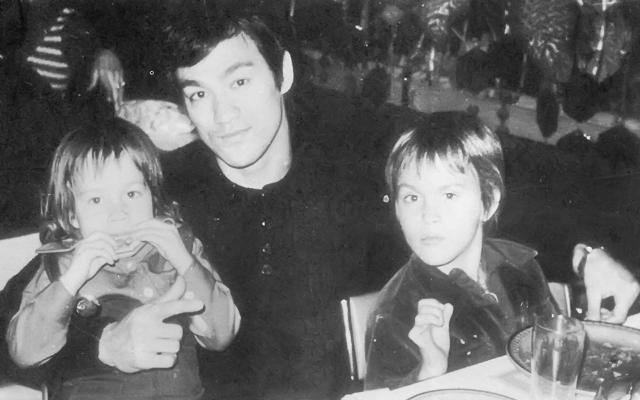
1. “The medicine for my suffering I had within me from the very beginning, but I did not take it. My ailment came from within myself, but I did not observe it until this moment. Now I see that I will never find the light unless, like the candle, I am my own fuel.”
In 1993, my brother Brandon Lee died suddenly due to an accident on the set of his movie, The Crow. He was coming into his own as an actor and was planning to get married in a few weeks when his life was cut short. The random and abrupt way his life ended shook me to the core and put me into a deep depression for several years. In the depth of my grief, I was looking through my father’s writings and this quote lifted me out of my darkness.
Action Step: Start noticing where you are struggling in your life; it might be something big or small. Start journaling your observations without judgment. Decide to move in a positive direction and seek the tools that are out there that will help you with constructive motion. Keep moving forward and celebrate each win.
2. “Empty your mind, be formless, shapeless like water. Now you put water into a cup, it becomes the cup, you put water into a bottle, it becomes the bottle, you put it in a teapot, it becomes the teapot. Now water can flow or it can crash. Be water, my friend.”
This is my father’s most famous quote. The core idea of being like water comes from Taoism—a 2,500-year-old Chinese philosophy. My father was schooled in Taoism as a young martial arts student, but he also had a way of interpreting these ancient ideas so more people could understand them. If you are like water, you can shape-shift into any form and flow around any obstacle with ease.
In episode 19 of the podcast, musician and record producer Steve Aoki says, “To live like Bruce Lee, is to be fluid like water and make your own journey.”
Action Step: The next time you are faced with an obstacle or some criticism, don’t become rigid, combative, or defensive. Feel yourself flowing around the problem like a stream moving easily around a giant boulder.
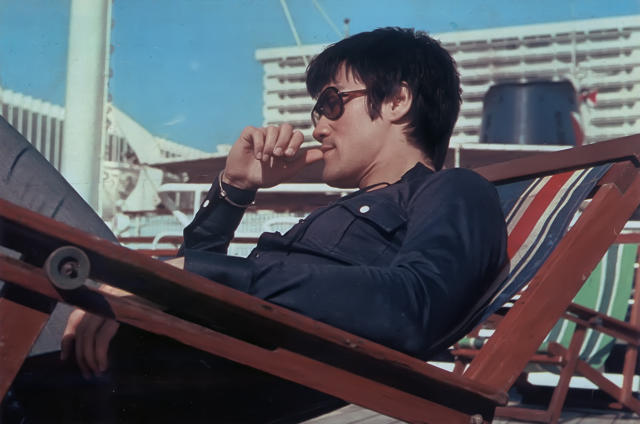
3. “Walk on.”
The years between The Green Hornet and the Hong Kong films were often difficult for my dad. In Hollywood he wasn’t getting offered the roles he felt he deserved, he struggled to support our family, and he injured his back very seriously. My dad was told that he would never be able to participate in martial arts ever again and may never walk normally again. But he made a clear decision not to believe the doctors and took responsibility to research his body and heal himself. “Walk on” was a phrase he wrote on the back of his business cards to remind him of this decision to stay positive and move forward.
Podcast listener Sam Shennan in Australia retells the story of shattering his ankle, yet having to just “walk on” despite the injury. “I focused on the positive of the situation and took the opportunity to listen, read, and study how successful people managed to reach self-sustaining,” he says.
Action Step: Do you have a phrase that helps you when you’re stuck? Find or write a phrase that can help you with whatever you are struggling with right now.
4. “My Definite Chief Aim”
In 1969 when he was 29 years old, Bruce Lee wrote a grand goal for himself as a commitment and direction to pursue. He called this “My Definite Chief Aim.”
“I, Bruce Lee, will be the first highest paid Oriental super star in the United States. In return I will give the most exciting performances and render the best of quality in the capacity of an actor. Starting 1970, I will achieve world fame and from then onward till the end of 1980 I will have in my possession $10,000,000. I will live the way I please and achieve inner harmony and happiness.”
Tina Roth Eisenberg, founder of Creative Mornings and Tattly is launching a Bruce Lee Tattly collection based on his philosophy with designs in his own handwriting. This year, she was also inspired to write her own Definite Chief Aim:
“I, Tina Roth Eisenberg, will build the largest global creative community, known for its in-person events and for its online rolodex to the creative industry. This community will be known for its inclusivity, generosity, a safe space for like-minded creative minds to meet. This organization will tear down walls between foreign cultures, open doors and create opportunities for its members. In addition, my business success will allow me to financially support and mentor creatives around the world. My path will provide me with interesting days, until the very end.”
Action Step: Write your own Definite Chief Aim. Dream big and remember that a goal is an inspired direction to pursue—not a rigid prison. Wherever your goal takes you, flow like water.
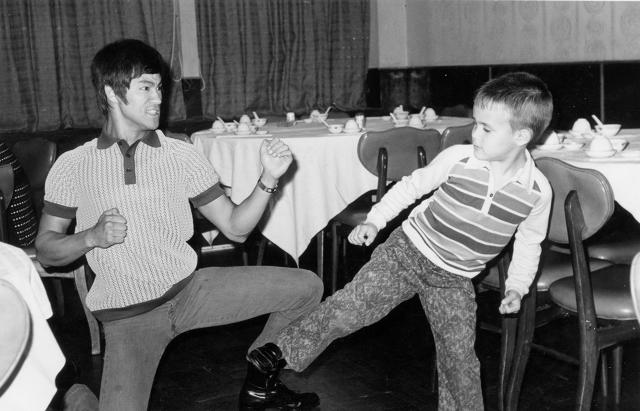
5. “Absorb what is useful, reject what is useless and add what is essentially your own.”
My father was a man who was always learning, growing, and evolving.
In 1964, the traditional Kung Fu community in San Francisco challenged my father to a fight. They were irritated by this rebellious young upstart who was teaching kung fu to students of all races. He was told that if he lost the fight, he would have to shut down his studio in Oakland. My father agreed to the fight and defeated his opponent in under three minutes. Even though he won the fight, and the right to keep his studio open, he wasn’t happy.
He was expecting to take his opponent down in under a minute, but during the fight, his opponent started to run around the room forcing my dad to chase him down. The classic form of kung fu he learned (wing chun) did not prepare him for a real-world fight like this. So my father began creating his own style called “jeet kune do,” discarding parts of the classical form that did not serve him, and evolve the art to suit his own body.
Comedian Kamau Bell says, “My career may be unconventional to some, but I just learned from what Bruce taught.”
Action Step: If you are repeating an old practice, pattern, or path that is no longer working for you, is there a way to modify it to be more useful? You don’t need to stay on a road that someone else paved. You can create one that suits your unique mission.
6. “Using no way as way, having no limitation as limitation.”
My father also designed graphics, exercise equipment, sculpture, shoes, clothes, and drinks. One of his famous designs is a series of four stages of self cultivation.
- Partiality: a separated yin/yang symbol representing a separated identity that runs to extremes and is not in harmony with itself.
- Fluidity: a unified yin/yang symbol which represents an achievement of balance between the masculine and feminine natures and arrows showing the constant interplay between the two.
- Emptiness: the formless form. Empty your mind and let it be free and uncluttered, ready to respond in the moment.
- The Core Symbol of Jeet Kune Do: representing the ultimate self realized man. The Chinese writing reads: “Using no way as way, having no limitation as limitation.”
Tory Elena is a drummer, vocalist, composer, and one half of the rock band Sea At Last, as well as a freelance artist, illustrator, painter, and writer. “There were many times early on in my life when I felt the pressure to “choose one path” and that being a “renaissance man” is more accepted in our society than a “renaissance woman,” she says. “Thankfully, I never believed this limiting idea.”
Action Step: Look at the four stages of self-cultivation and identify where you are on your own journey. Journal about where you are right now and how you would like to grow.
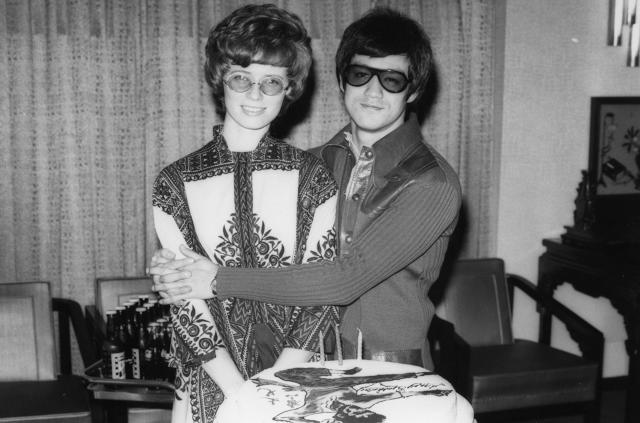
7. “Under the sky, under the heavens there is but one family.”
In my dad’s kung fu studio, his students were women and men of all colors and backgrounds. He truly believed that we were all brothers and sisters—a family of man. Even though he faced constant discrimination in Hollywood and was told that an Asian man could never play a lead role on TV or film—he never became bitter. He just became more determined to write and direct his own scripts that showed his potential and the beauty of his Asian culture. My dad never felt competitive with anyone; he was on a mission to become the most actualized Bruce Lee he could be. His charisma and talent drew people in, but his philosophy gave strength and solidarity to all people of color, and anyone who has ever felt like an underdog.
Actor George Takei says, “Bruce Lee made a tremendous impact on me and on the world’s psyche. He was an action hero when we’d been saddled with all these one-dimensional stereotypes: the servant, the buffoon, or the enemy. He was someone Asians could be proud of.”
Action Step: Think about a group, community, or individual who you have negative or stereotypical judgments about. Can you create a moment of common ground where you can see each other as human beings? It could be a brief conversation about a favorite food, a movie, love for animals, etc. Something that gives you the experience of our human connectedness. We all have much more in common than we think.
It’s been 43 years since my father passed away, but his legacy is stronger than ever and his ideas are now connecting with millions of young people who weren’t even born when he was alive. Bruce Lee is a bright beacon in today’s world where strong, actualized men are needed. He speaks to the idea of taking action within the context of compassion that resonates with today’s youth who are trying to find their way in a shifting landscape.
Related Video: Jujitsu And Business: There’s More In Common Than You Think
Martial arts icon Bruce Lee meticulously documented his personal development.
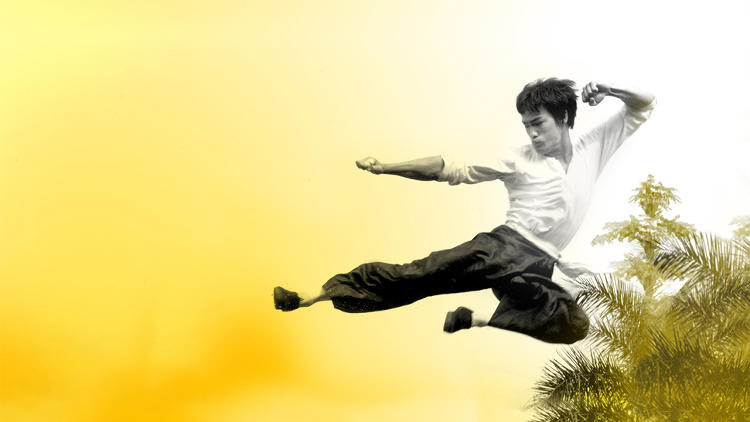
Lee posing with images representing the four stages of cultivation
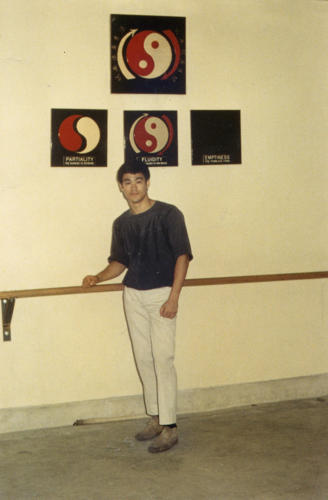
Tattly model wearing Bruce Lee’s words and likeness

Tina Roth Eisenberg, founder of Creative Mornings and Tattly
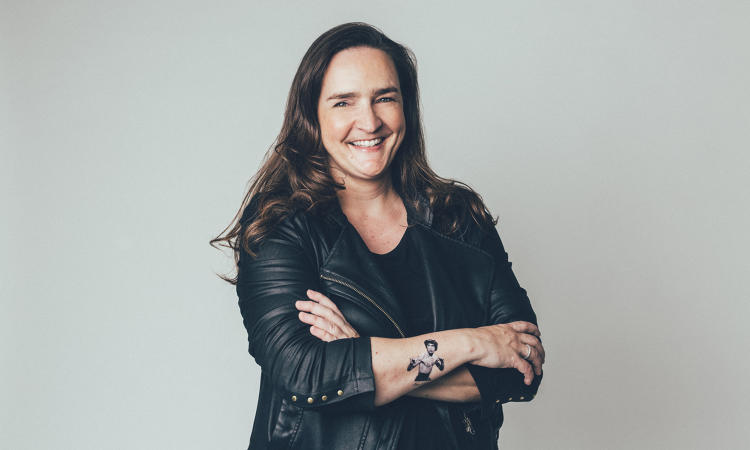
Shannon Lee, CEO of the Bruce Lee Family Company
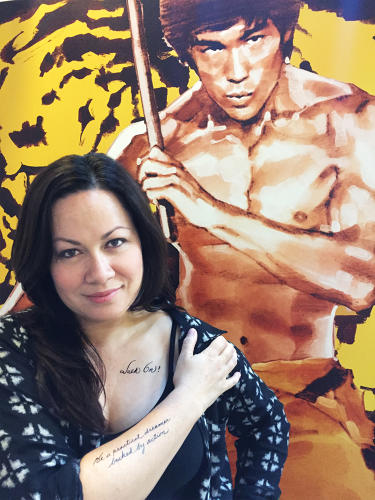
Musician and producer Steve Aoki
‘ src=”http://a.fastcompany.net/multisite_files/fastcompany/imagecache/slideshow_large/slideshow/2016/11/3065979-slide-s-aoki-photocreditcaesarsebastianhuntington.jpg”>
Comedian Kamau Bell
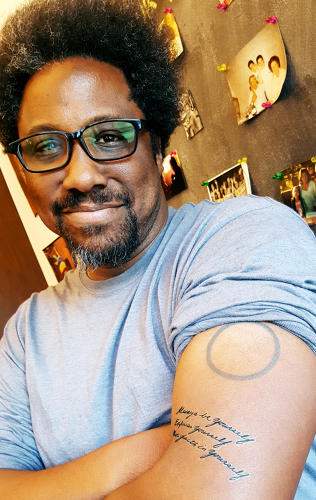
Fast Company , Read Full Story
(86)














